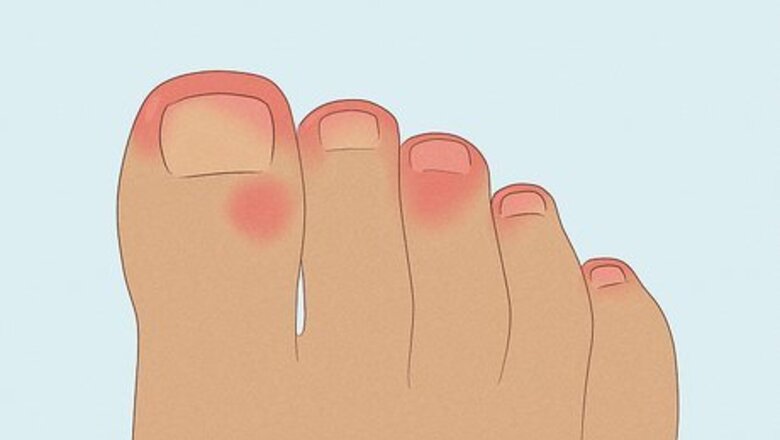
views
- Trench foot (immersion foot) happens when your feet are cold and wet for too long. It’s usually caused by wearing wet sock or shoes for several days.
- Alternatively, trench foot can be caused by prolonged exposure to damp, cold, and unsanitary conditions.
- To treat trench foot, wash and dry your feet, then keep them warm and clean. Prevent trench foot by wearing moisture-wicking socks and footwear that fits properly.
Symptoms
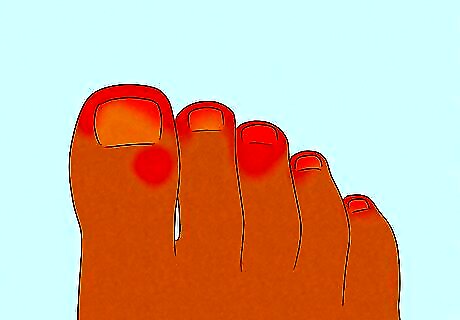
Red or discolored skin In the initial stages, trench foot often turns your feet bright or splotchy red. As trench foot gets worse, you may notice your skin turning blue, green, or even black. If your feet turn blue, green, or black, seek medical care right away, as it could indicate an infection.
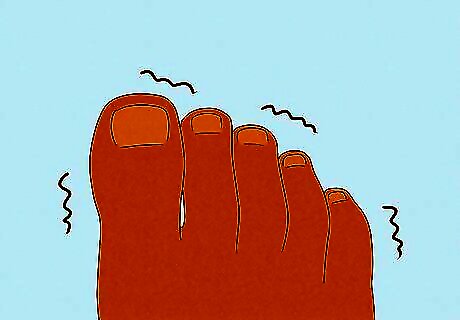
Numbness As your feet get cold, the blood flow may slow down. Your feet might feel numb or like you can’t move them properly.
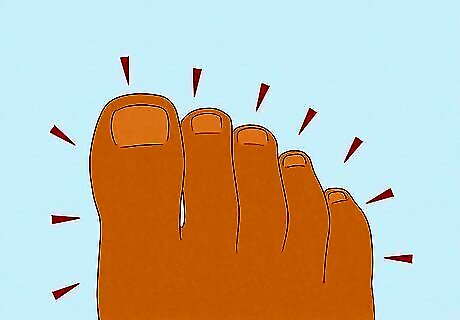
Tingling pain When your feet are cold for a long time, they might not hurt, but they could feel tingly or give you mild discomfort. Watch out for any tingling or a pins and needles sensation in your feet.
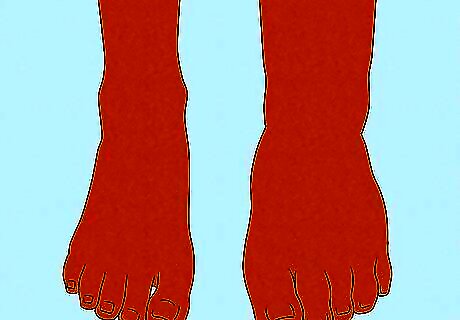
Swelling Trench foot may cause your feet to swell up and get bigger. Along with other symptoms, watch for your feet swelling or the skin feeling tight.
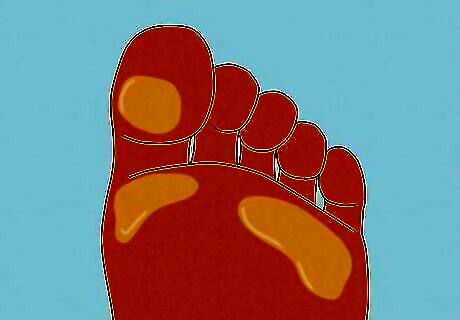
Blisters As trench foot progresses, you may develop blisters or sores on your feet. Blisters indicate a serious case of trench foot. If you notice blisters on your feet, get medical attention right away.
Treatment
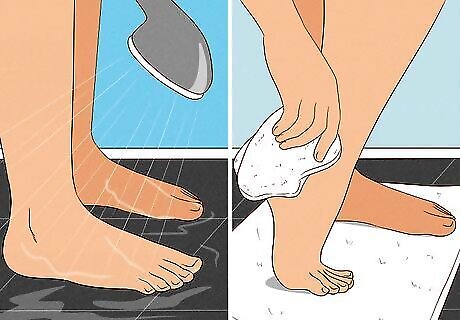
Wash and dry your feet frequently. Although trench foot was termed over a hundred years ago and seems to be something of the past, it can still occur in people who spend many hours in cold, wet conditions. One of the best ways to treat trench foot is to keep your feet dry and clean. If you find yourself standing in water for a few hours or more, clean and dry them as often as you can, and change into dry socks as soon as possible.
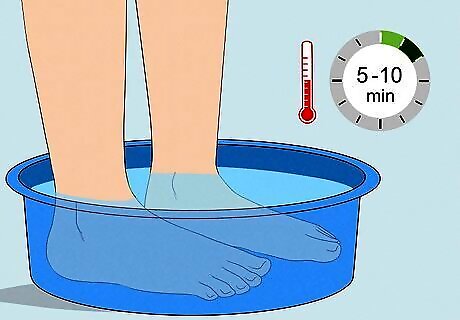
Warm up your feet for 5 to 10 minutes. If you've been standing in cold water for hours at a time, it's important to not only dry your feet, but you need to warm them up gradually. The heat will open up (dilate) blood vessels and increase the circulation to your feet, which will stop the progression of trench foot. Apply warm packs or soak your feet in warm water for approximately 5-10 minutes. Resist the urge to use hot water, because you may scald your feet and make the condition worse.
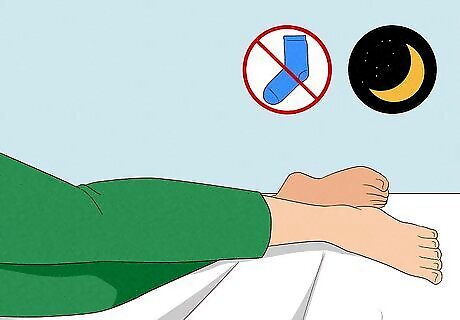
Take off your socks while sleeping and resting. Once you've warmed your feet up, it's important to keep your socks off initially while you rest and sleep in your bed. This may seem counterintuitive for cold feet, but wearing tight socks can reduce blood circulation and make trench foot worse. After a few days of recovery, you can wear loose socks made of breathable material, such as cotton. Instead of socks, keep your feet warm while resting by covering them with a wool blanket. Don't elevate your feet while sitting on the couch because you want to encourage blood flow to your lower legs and feet. While lying in bed at night, add another blanket to the bottom of your bed to keep your feet warm. Try not to cross your ankles, because that can slow circulation to your feet.
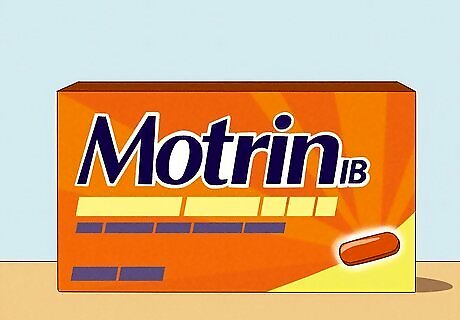
Take over-the-counter pain medications. Trench foot is characterized by tissue swelling and pain that can become quite severe. Take medications that can combat the pain and swelling, such as NSAIDs. Ibuprofen (Advil, Motrin) and or naproxen (Aleve) are common over-the-counter types that work well. Anti-inflammatories work best and are safest if taken for short periods of time—less than a few weeks. Once trench foot sets in, it can take between a few weeks to several months to fully heal, depending on the severity and the overall health of the person.
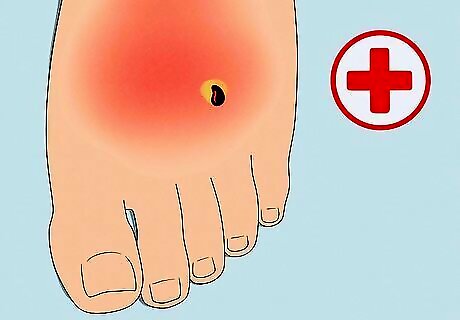
Seek medical attention if you notice signs of infection. The main signs of trench foot (pain, swelling, blistering, color changes) typically aren't due to infection. However, the macerated skin can easily get infected, and that infection can quickly turn serious. Other signs of infection to look out for include bloody pus discharge, red and/or white streaks on your feet, foul odor and mild fever. If blisters form with trench foot, the likelihood of infection developing is significantly increased. If you notice any signs of infection on your feet, or if the tissue doesn't look normal, see a healthcare provider as soon as possible. Your doctor may give you antibiotics to prevent infection or even a tetanus booster if your vaccination record isn't current.
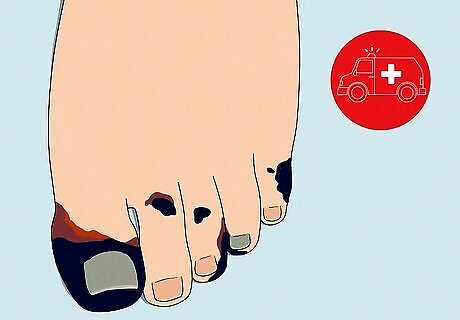
Seek emergency care if your feet turn dark blue, green or black. Discoloration of the skin on the feet indicates that tissue is dying from not getting enough oxygen and nutrients for too prolonged a period of time. Tissue death (also called necrosis) can quickly lead to gangrene, which is a medical emergency needing antibiotics and likely surgical intervention. In addition to dark discoloration, other signs of gangrene include: further swelling, severe pain then a loss of sensation, peeling away of skin, foul-smelling discharge and disfigurement of toes. In severe cases of trench foot where gangrene has set in, foot and lower leg amputation is usually required.
Prevention
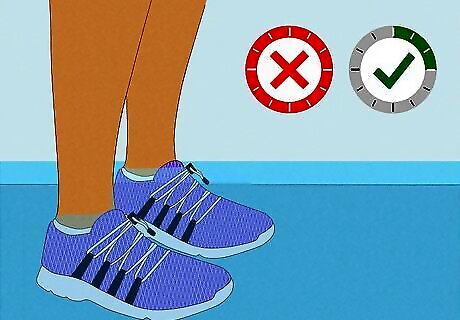
Don't stand in cold or cool water for long periods of time. The majority of people don't want to stand in cold water for very long, although some jobs and pastimes (fly fishing or seeing outdoor concerts) significantly increase the risk of developing trench foot. Keep an eye on the clock and remember that trench foot can develop in as little as 12 hours or so under some circumstances. Retreat to dry ground within that time frame if possible. Take breaks from your job every few hours if it requires you to stand in water. Standing in warm, unsanitary water for many hours is also problematic and causes another type of immersion foot, so keeping your feet dry is important regardless of the temperature.
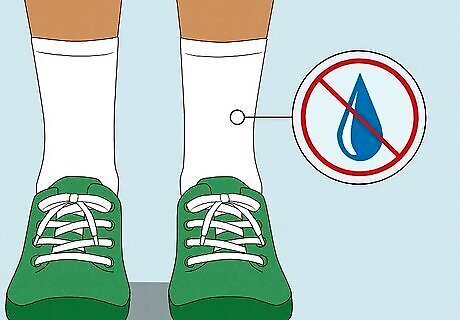
Keep your feet dry and clean. If your job or situation requires spending substantial amounts of time standing in wet or damp conditions, it's important to check or monitor your socks regularly to see if they're damp or wet also. If they are damp or wet, change into clean, dry socks in order to prevent or lower the likelihood of developing trench foot. If you're on the job or need to walk or stand in wet conditions, pack a few extra pair of socks with you just in case. For wet conditions, use polypropylene sock liners, which are specially designed to draw moisture away from your feet. Socks made out of natural fibers, such as cotton and wool, tend to be better for preventing trench foot than artificial materials.
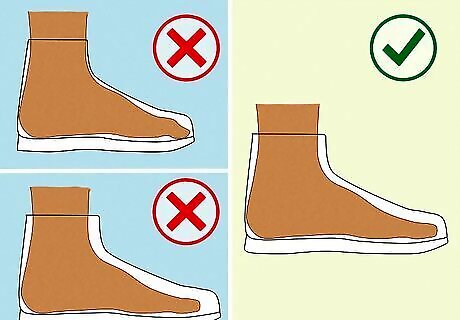
Wear properly fitting footwear. Ideally, you should wear waterproof boots that fit above your ankle, but regardless of type, make sure they fit well—not too loose or too tight. Stick to shoes or boots made out of treated leather, and avoid ones made of synthetic materials, such as rubber or vinyl. Leather is more expensive, but repels moisture while being able to breathe. Depending on your situation, it may be best to change your footwear a few times daily and let the wet pair dry out overnight. Rubber boots and gators are great for spending a few hours standing in the water (for fly fishing, for example), but can help trigger trench foot after many hours, especially if the rubber doesn't have an insulating inner lining.
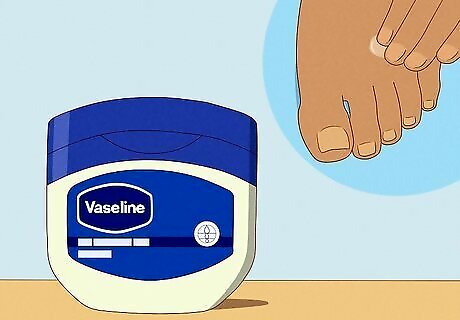
Apply Vaseline or talcum powder to your feet. An old trick used back in the World War I era to prevent trench foot was to apply lots of whale oil to the feet in order to repel the moisture and help insulate the feet from the cold. In modern times, it's more practical to rub some Vaseline over your feet instead, although the effect and helpful benefits remain the same. Another method of keeping feet dry is to sprinkle some talcum powder on them, which helps absorb the moisture instead of repelling it. Talcum powder is especially recommended for people who tend to sweat more. Excessive perspiration can also be controlled by applying drying agents, such as aluminum chloride.
Diagnosis
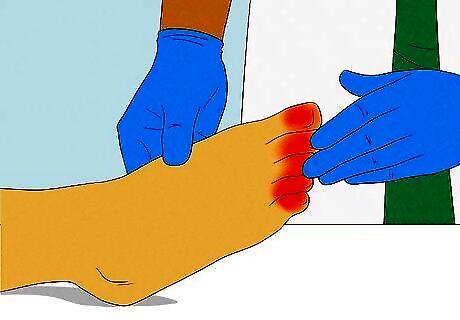
Your doctor will diagnose trench foot with a physical exam. In order to diagnose you with trench foot, your doctor will ask you about your symptoms and take a look at your feet. They might ask you to recount your most recent activity to see if you’ve been exposed to moist or cold conditions for a long period of time. If your trench foot is developed enough, your doctor may perform a nerve test on your feet to see if you’ve lost any feeling.
Trench Foot Overview
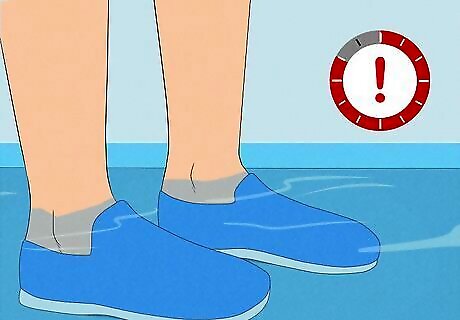
Trench foot is caused by prolonged exposure to moisture or water. Trench foot develops because the blood vessels of the feet constrict in an attempt to keep the rest of the body warm, which reduces the amount of oxygen and nutrients the tissue gets. Without adequate oxygen and nutrients, the tissues of the feet swell and eventually die. Bacteria in the water can also trigger infections if there's cuts or abrasions on the feet. Trench foot can take less than a day of water exposure (as few as 12 hours) to develop. While trench foot typically happens in wet conditions, it can also happen in dry climates if the temperature stays between 30 and 40 °F (−1 and 4 °C).
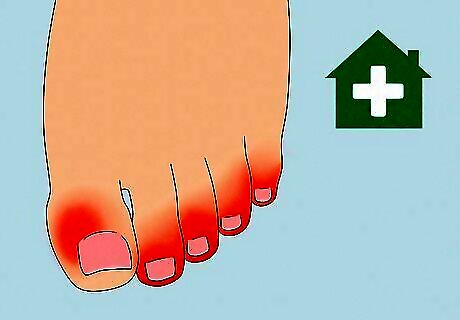
Most mild cases of trench foot respond well to home care. If you’ve just noticed the symptoms of trench foot and can start treating it quickly, it’s likely that your symptoms will subside in a matter of days or weeks. Keep an eye on your feet, and seek medical attention if any of your symptoms get worse. Severe cases of trench foot may require medical care. If your feet get infected or develop blisters, seek medical care. Your doctor will assess your symptoms and decide the best course of treatment for you.



















Comments
0 comment